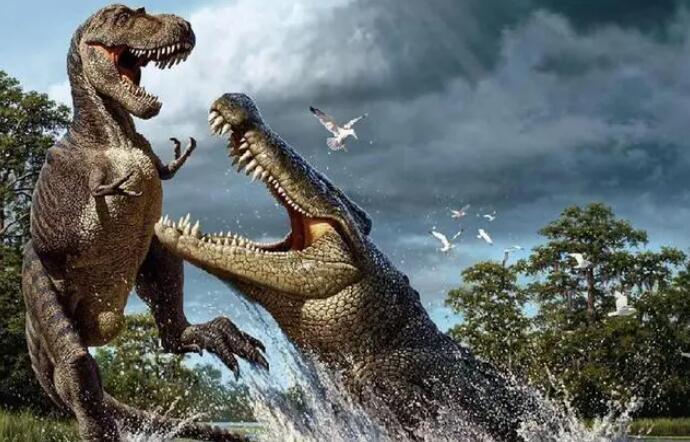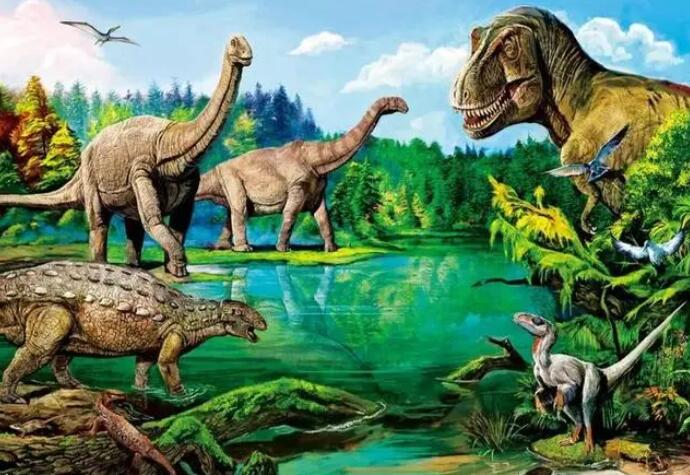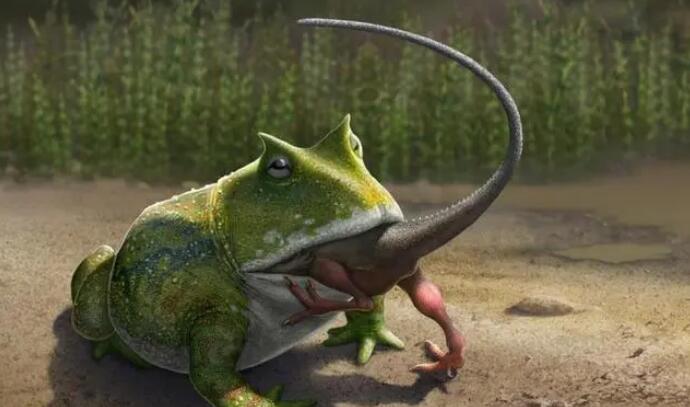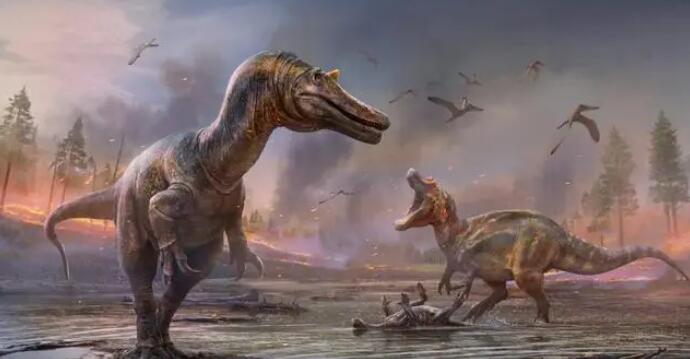Dinosaur Encyclopedia
What Animals Fed on Dinosaurs
Preface: In ancient times, the Earth was a land full of mysteries and wonders, with dinosaurs undoubtedly becoming the most fascinating creatures for people to explore.
These colossal creatures first appeared in the Triassic period and, after numerous mass extinctions, they finally rose to dominance during the Jurassic period, becoming the rulers of the Earth.
Dinosaurs, hailed as “the overlords of the Earth,” left a deep impression in our minds: massive, fierce, and dominant.
However, during the age of dinosaur domination, not all creatures lived in fear. Some animals dared to challenge the authority of dinosaurs and even preyed on them. What was the reason behind this?

1. First Encounter with Dinosaur Fossils
In the early 19th century, in a village in southern England, there lived a country doctor named Gideon Mantell.
Dr. Mantell was highly skilled in medicine, and almost everyone in the village knew him. However, compared to practicing medicine, Mantell seemed more passionate about exploring the mysteries of nature.
Especially in the exploration of fossils, both Mantell and his wife were avid fossil collectors, often embarking on adventures together to search for and collect various ancient fossils.
One cold morning in 1822, as Mantell’s wife was about to bring him his coat, she stumbled upon some peculiar large tooth fossils hidden in the roadside rocks.
As an avid fossil collector, she instantly realized that these large teeth were not simple fossils. She removed them from the rocks and hurried home without even delivering the coat.
Shortly after, Mantell also returned home. Initially annoyed by the cold, he was stunned when he saw these fossils and became enamored with them.
Subsequently, they returned to the location where the fossils were found and carefully examined them. They found many similar teeth, as well as other fossilized tissues such as bones and palm bones.
Mantell had no idea what species these belonged to, so he decided to seek advice from the renowned French paleontologist Georges Cuvier. However, Cuvier gave a puzzling answer, suggesting that these fossils were not ancient.
Cuvier believed that the so-called teeth belonged to rhinoceroses, but Mantell compared them to rhinoceroses and found discrepancies. Moreover, these teeth were obviously larger than those of rhinoceroses. Two years later, Mantell happened to meet a paleontologist studying iguanas.
They compared the specimens in the museum and ultimately declared: these so-called “rhinoceros” fossils were not rhinoceroses at all, but belonged to an extinct ancient reptilian lizard known as the dinosaur.
This led to a long period during which these fossils were associated with the word “lizard,” such as forest lizard, differentiating them from what people initially called “the remains of giants.”
Later, with the continuous discovery of ancient biological fossils, and with the development of technology, it was confirmed that the fossils discovered by the Mantells were actually from a dinosaur called the Iguanodon, which was also one of the earliest dinosaur species confirmed by the scientific community.
Dr. Mantell and his wife’s love and pursuit allowed dinosaurs, these ancient and mysterious creatures, to see the light again. Their contributions were of great significance to scientific research and laid the foundation for later paleontological studies.

2. Dinosaurs
Although Mantell was the first to discover dinosaurs, the term “dinosaur” was not coined by him but by the British zoologist and paleontologist Richard Owen.
These enormous creatures, with their astonishing size and diversity, became one of the wonders of Earth’s history, with numerous species of dinosaurs known.
According to scientists’ estimates, the number of known dinosaur species has already exceeded a thousand, with China having the highest number of dinosaur fossil discoveries in the world.
With such a variety of dinosaur species, the ones we are familiar with, such as Tyrannosaurus rex, Triceratops, Pterosaurs, and Brachiosaurus, are just a few examples. There are likely many more dinosaurs yet to be discovered.
However, it must be said that during that era of dinosaur domination, there were instances of cannibalism among dinosaurs. When food was scarce, hungry dinosaurs would resort to such choices, and this brutal survival competition might have been one of the reasons for the rapid evolution of dinosaurs.
Did you know? Even such powerful dinosaurs had their natural enemies.
3. A Frog and Two Crocodiles
The devil frog is a fascinating amphibian, also known as the devil toad, and its name reflects its terror.
The devil frog coexisted with dinosaurs during the mid-Cretaceous period about 70 million years ago and, compared to modern frogs, the devil frog could grow up to 40 centimeters in length and weigh between 9 and 10 kilograms.
Most notably, devil frogs possess a tough bony “armor,” which not only gives them a unique appearance but also provides additional protection.
The heads and mouths of devil frogs are particularly prominent, with powerful jaws and sharp teeth, allowing them to achieve a remarkable biting force of between 500 and 2000 newtons.
Devil frogs typically lurk on land, relying on camouflage techniques to approach prey. Once an opportunity arises, they quickly open their huge mouths to capture insects, small reptiles, and even some dinosaur hatchlings.
Devil frogs are not always passively waiting for prey to come to them. Sometimes they actively seek out the nests of large dinosaurs to feed on freshly hatched hatchlings and dinosaur eggs.

4. In addition to devil frogs, there are also two crocodiles – the Tyrannocrocodiles and the Emperor Crocodiles.
The Emperor Crocodile, also known as the muscle crocodile, emperor crocodile, or super giant crocodile, is one of the giant crocodiles that lived in Africa during the early Cretaceous period.
Adult Emperor Crocodiles typically weigh around ten tons and can grow up to 11 meters in length. Their primary habitat is along the edges of rivers and ponds, where they lurk and wait for prey to approach. Emperor Crocodiles have extremely sensitive senses of smell and can detect the scent of prey from a considerable distance.
Emperor Crocodiles have extremely powerful and robust teeth, with a strong biting force, enabling them to easily tear apart large prey such as dinosaurs.
In addition to the Emperor Crocodile, there is another crocodile known as the Tyrannocrocodile, also called the “terrifying giant crocodile,” which lived during the late Cretaceous period, later than the Emperor Crocodile.

The Tyrannocrocodile could grow to a length of over 10 meters, although there is controversy about this, with some believing it could reach 15 meters, while many biologists believe it was around 12 meters.
Like the Emperor Crocodile, the Tyrannocrocodile typically lurks in water, employing similar hunting methods to modern crocodiles. The Tyrannocrocodile also waits for prey to approach the water source before launching an ambush.
For dinosaurs, especially those with smaller sizes and weaker defense capabilities, Tyrannocrocodiles posed the greatest threat to their survival.
Both Tyrannocrocodiles and Emperor Crocodiles were powerful creatures of the dinosaur era, and their appearance posed a serious threat to the survival of dinosaurs. Although dinosaurs once dominated the Earth, when faced with challenges from devil frogs, Emperor Crocodiles, and Tyrannocrocodiles, they had to remain vigilant